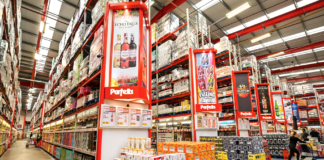From December, new rules designed to improve the traceability of seafood will come into force. Labelling will have to include whether the fish has been defrosted, its scientific name, the catch method and a far better defined catch area.
It comes after a recent joint investigation by Interpol and Europol in which 484 tonnes of yellowfin tuna was found to have insufficient traceability documents.
For Rob Wing, director of Cornwall-based seafood wholesaler Wing of St Mawes, knowing where produce has come from is not just about being legally compliant. It’s one of the most powerful marketing tools available to a wholesaler.
[pull_quote_right]Seafood provenance is not just about being legally compliant. It’s one of the most powerful marketing tools available to a wholesaler [/pull_quote_right]
“The more transparency the seafood industry offers its customers, the better the light we’ll be seen in,” he says. “Currently, we are only required to go back one step in the supply chain, and say: ‘This fish comes from Grimsby Market or Peterhead Market.’
“But we go way beyond the requirements. To give you an example, we can attribute a particular catch of fish to the skipper of a particular trawler.”
To his customers, who include high-end restaurants, chefs and home consumers, traceability is perhaps the key indicator of quality for products with short shelf lives.
“Provenance is absolutely critical,” he says. “Our customers will list things on their menus like seared Falmouth Bay scallops or Padstow Bay lobster. It’s a marketing tool.”
Another labelling rule coming in is that the net weight listed must also be without glazing (a protective layer of ice), which could have cost implications.
Annette Mortensen, corporate quality manager at supplier Royal Greenland, says: “Glazing and net weight have been recurrent issues and suppliers could become unstuck and have to re-evaluate their pack size and pricing strategies to compete.
What needs to be on the label
- SALT: The salt content of the fish
- AREA: The area where the fish was caught.
- CATCH METHOD:
- The equipment used to catch the fish.
- FIRST FREEZE DATE:
The date when the fillet was first frozen. - GLAZE-FREE NET WEIGHT:
No ice must be included in the net weight value.
“For us, it will not pose an issue, because we have an average glaze of 10% for our UK foodservice products.”
Simon Paterson, technical manager of F Smales & Son Fish Merchants in Hull, says the onus is on wholesalers to investigate the supply chain for any fish they sell.
“When you are buying a product, you are able to get the catch documentation and it’s something you should ask for,” he says. “You have to be aware of what you are doing and what you are getting.”
For most consumers, price is still a more pressing factor than provenance, says Hull, who supplies packaged seafood nationally to retailers and fish and chip shops, but for retailers, traceability is absolutely essential.
“It’s part of being able to say for sure that their seafood has not been caught illegally.”
With the net tightening on dodgy seafood sourcing, it is essential that wholesalers up their game, says Michaela Archer, head of information at Seafish, the public body set up by the Fisheries Act 1981 to improve efficiency and raise standards across the seafood industry.
“Wholesalers should ensure they only buy from reputable sources, undertake regular visits and checks with their suppliers, and have clear product specifications.”







